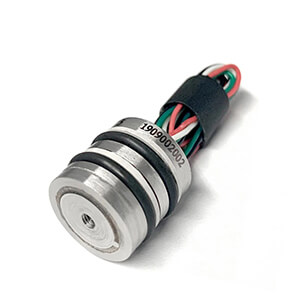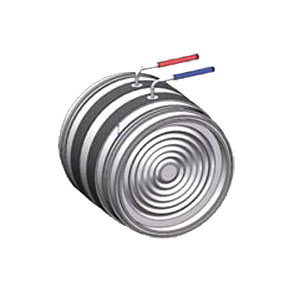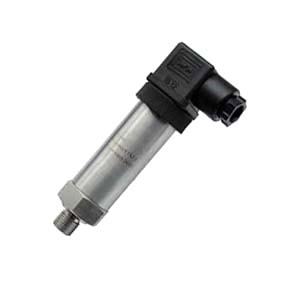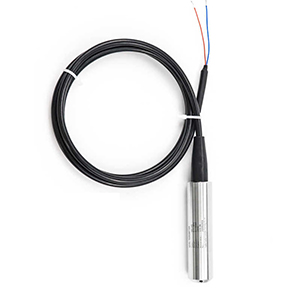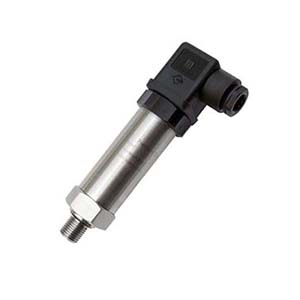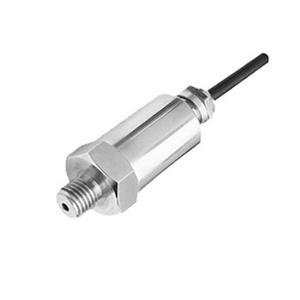More and more people tend to ask what the difference between pressure transducer and pressure transmitter is and what the difference between pressure sensor and pressure transducer is as well. Actually, in EastSensor, our engineers make comprehensive sturdy and consultant then come up with below points to help customers, no matter within or not the measurement instrument filed to have a better understanding among their meaning.
As a matter of fact, the exact definition of these terms are usually interchanged from case to case, but we’d admit that they have general definition as below
Pressure Sensor
A millivolt output signal generally. Millivolt (mV) output signal (also a general term for all pressure types); a device that measures pressure. The millivolt output signal can typically be used ten (10) to (20) feet away from the electronics without significant signal loss.
The signal is proportional to the supply. A 5VDC supply with a 10mV/V output signal produces a 0-50mV output signal. Older technologies such as bonded foil strain gage or thin film technology produce 2-3mV/V (millivolts per volt), whereas MEMS technology can produce 20mV/V reliably.
Millivolt output signals give the design engineer the flexibility to condition the output signal as their system needs it and can reduce package size and cost.
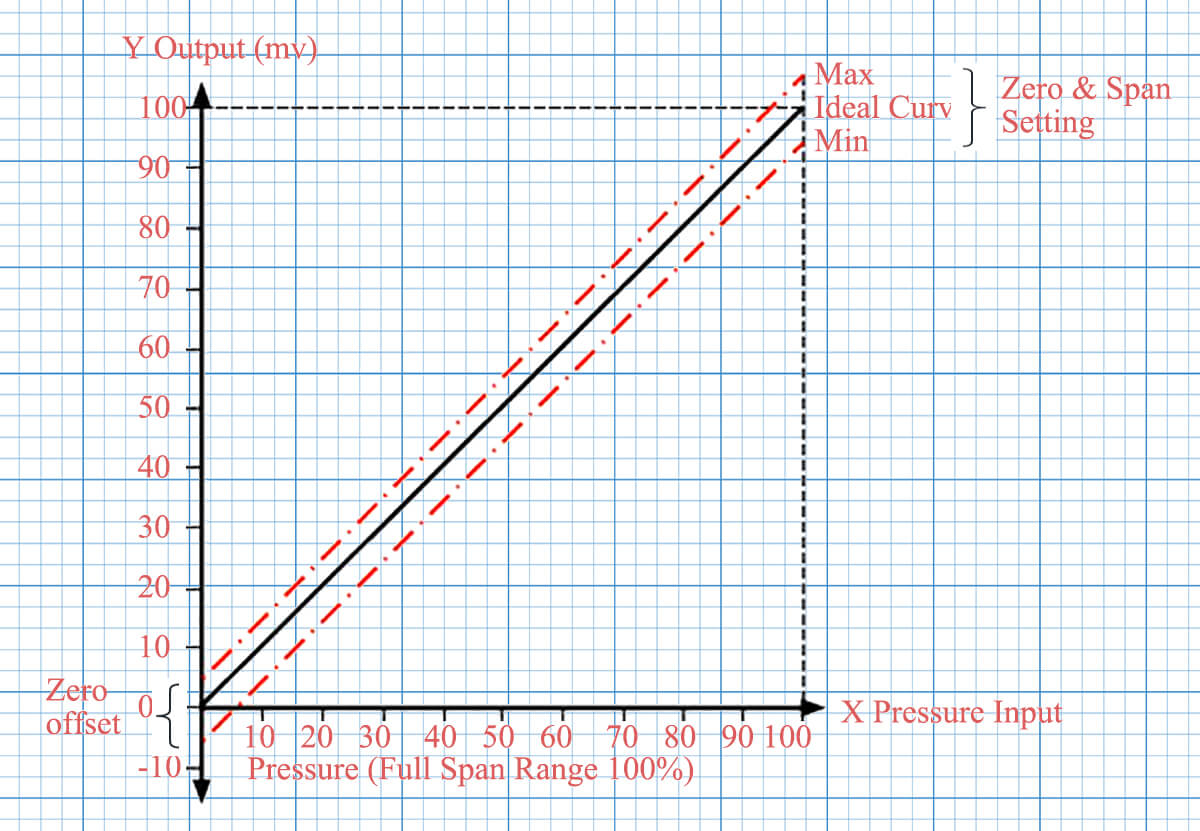
Pressure Transducer
An amplified voltage output typically. Transducers are voltage-output devices that can be used with simple signal conditioning but are more sensitive to electromagnetic interference.
The electrical resistance of the connecting cable can cause significant errors if the cable is long. They require three or four connecting wires to supply power and deliver the output signal.
Click to find more details about Why you need Millivolt Output Pressure Transducer?
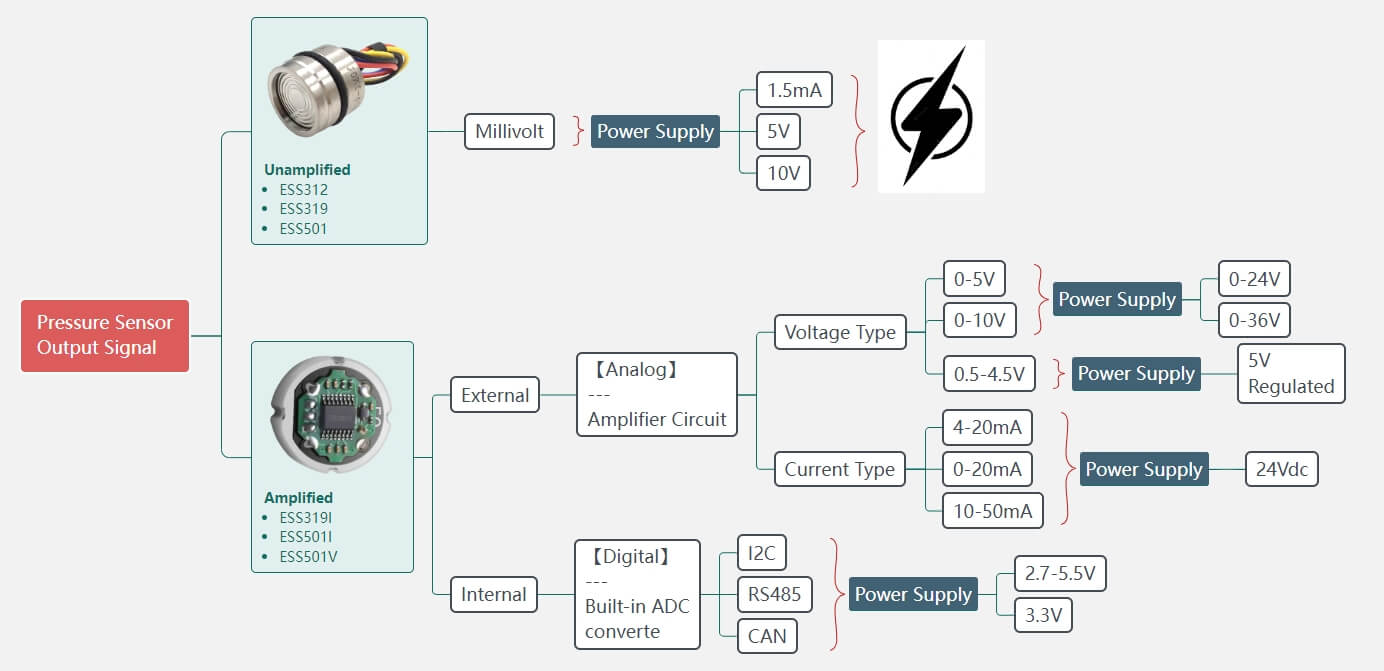
Pressure Transmitter
Always output 4~20mA signal. Transmitters are current-output devices and may have two or three wires. Where two wires are used to both receive power and transmit an output signal, significant cost savings can be made where long cables are needed.
They are frequently scaled to vary from 4 mA to 20 mA as the pressure varies from minimum to maximum. Thus the on-board electronics has to be capable of operating with a maximum current drain of less than 4 mA.
Being ‘current driven’, the in-built circuitry controls the voltage across the transmitters’ two terminals to ensure that the appropriate pressure-proportional current is maintained irrespective of line resistance up to a specified limit.
Thus these devices are very suitable for use with long cables and are much less susceptible to electromagnetic interference than voltage-output transducers. Sometimes called current loop or serial devices, additional displays at different locations can easily be included in the loop without degrading the output signal. Such devices normally suffer no significant degradation of signal output with distance.
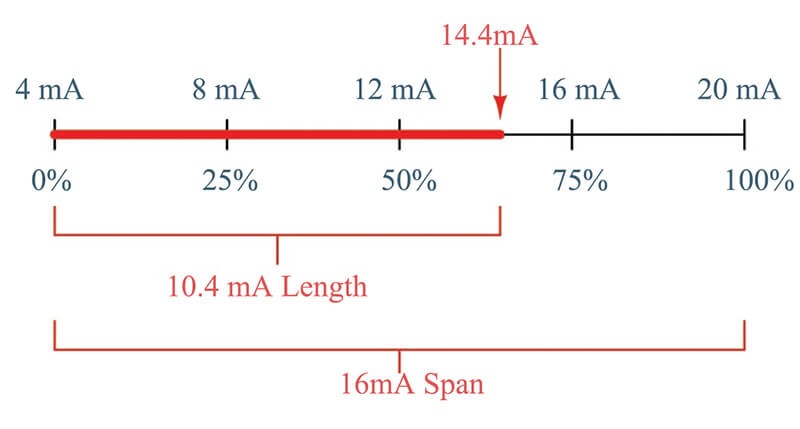
Digital output transmitters normally contain a microprocessor which converts measured pressure values into digital codes which are transmitted to a remote receiver, or ‘host’, via wires, optical fibres or radio. There are a number of standard systems available, such as Fieldbus (IEC 1158) and HART, the latter having the facility to operate in combination with the more traditional 4 mA to 20 mA current-output systems.
Beyond supplying pressure values, digital transmission can include diagnostic information, status and alarms and can also facilitate remote reconfiguration of transmitters.
Once the difference can be described to the definition of signal output, the question can be set. Below is a general guideline on such terms and some advantage and disadvantage.

Pressure Transducer:
High level voltage or frequency output signal including 0.5 to 4.5V ratiometric (output signal is proportional to the supply), 1-5V and 1-6kHz.
These output signals should be used within twenty (20) feet of the electronics. Voltage output signals can offer low current consumption for remote battery operated equipment. Supply voltages are typically from 8-28VDC, except for the 0.5-4.5V output, which requires a 5VDC regulated supply.
Older voltage output signals, such as 0-5V, do not have a “live zero” where there is signal when the sensor is at zero pressure. The risk is that the system does not know the difference between a failed sensor with no output and zero pressure.
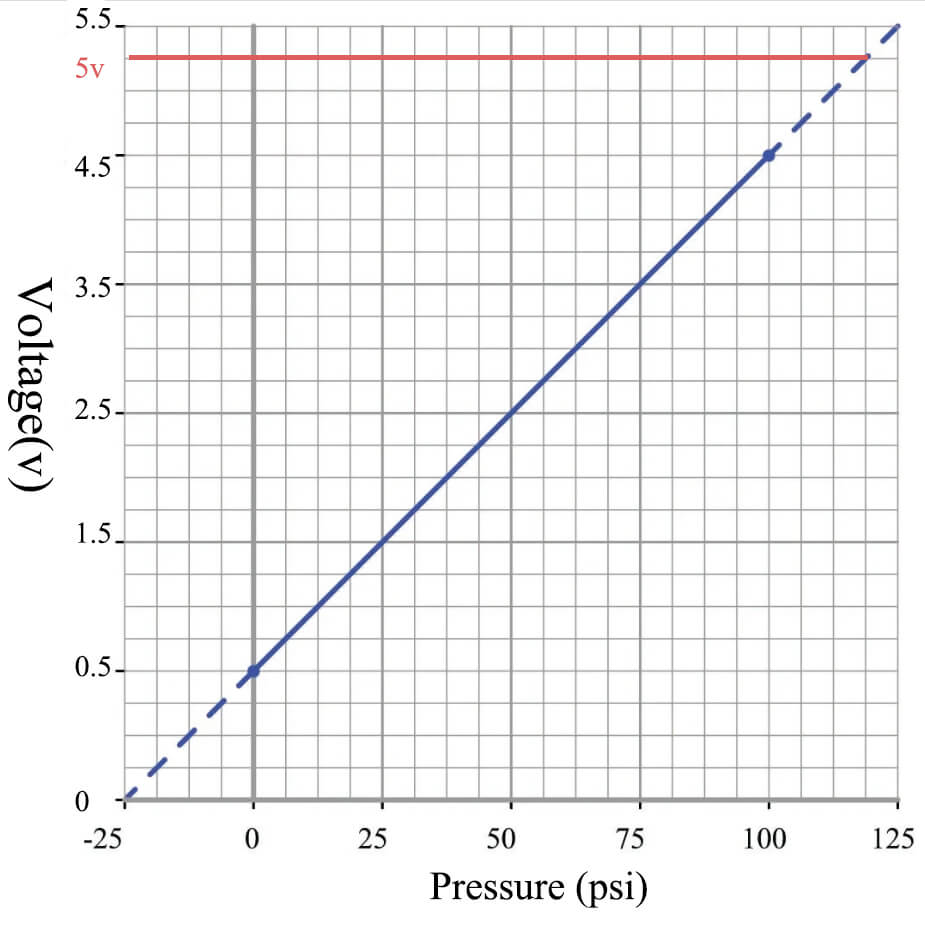
Pressure Transmitter:
Current output signal, i.e. 4-20mA (4 to 20mA), the current, rather than the voltage, is measured on the device, rather than the voltage; EastSensor pressure transmitters also have many types of two wire devices (red for supply, black for the ground). 4-20mA pressure transmitters offer good electrical noise immunity (EMI/RFI), and will need a power supply of 8-28VDC.
Because the signal is producing current, it can consume more battery life if operating at full pressure.
Pressure Transducers are available with a variety of voltage output options.
With advances in controllers that receive the transducer signal, there is more flexibility in the marketplace. There are minor differences between many of the output options on the market place. While some developed to maintain competitive advantages via customized products, others have solid reasoning.
The outputs reviewed here are all powered by a minimum of 10VDC (0-10V and 1-10V outputs need 12VDC). A 0.5-4.5V ratiometric output signal is traditionally powered by a 5VDC regulated supply, yet other variations are possible. In a similar way, millivolt output signals have their own unique features and benefits. The following is a brief introduction to amplified voltage pressure transducers.
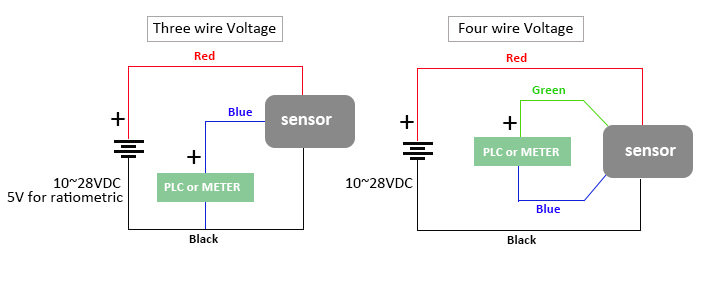
Zero based output
Traditional pressure transducer outputs include 0-5V and 0-10V signals. Popularized in Europe, zero based output signal produce no output signal at zero pressure in a standard gauge pressure transducer.
Transducers are offered in three wire and four wire configurations with zero based output signals. The advantage of the 0-10V signal is that it has twice the span as the 0-5V. The main disadvantage to any zero-based output signal is that there is no signal with zero pressure.
If the transducer has a cut wire, broken sensing element, or electronics that received an over-voltage, the sensor will produce no signal, thus no way to know of a problem. If we assume that the pressure transducer is measuring water pressure, it will produce a 0V signal when there is no pressure in the line.
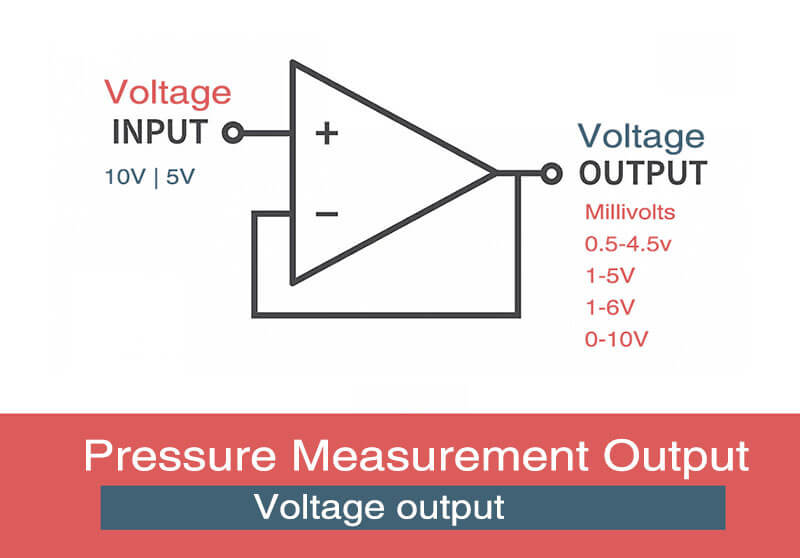
When pressure is sensed, it will signal the pump to act. Since the sensor at 0V is the same in fault conditions and at no pressure, there is no way to distinguish between the two. The pump would not know to run, and could cause a flooding condition.
Voltage at zero pressure
There are many variations and custom options for pressure transducers with an output signal at 0 PSI. For example, EastSensor offers 1-3V, 1-5V (for Automotive Industry), and 0.5-4.5V. The 1-5V output signal is most popular in the industry. There is the safety feature of having a 1 volt output signal at zero pressure and a 4 volt span for pressure measurement. 1-3V and 1-5V output signals are popular among engineers who prefer a voltage span similar to the zero based outputs above, but with the signal at zero pressure. The 0.5-4.5V output signal is somewhat unique.
For remote telemetry applications, current consumption is a common factor. Because lithium-ion batteries or solar panels create power in remote oil fields and on construction site equipment, having a low power supply voltage and low current consumption extend the service life of the pressure transducer.
The 0.5V 0PSI signal gives enough indication that the transducer is working. The span to 4.5V gives enough resolution to accurately measure the pressure or level
Additional Posts which may be of interest
- How to select Pressure Gauge?
- Pressure Switch V.S Pressure Transducer, what’s the difference?
- How sensor has been rocking our world?
- What’s the role of smart sensors in Industry 4.0?
- Basic Knowledge You Need to Know about Pressure Gauge
- 10 practices need to considerate before choosing pressure transducer

